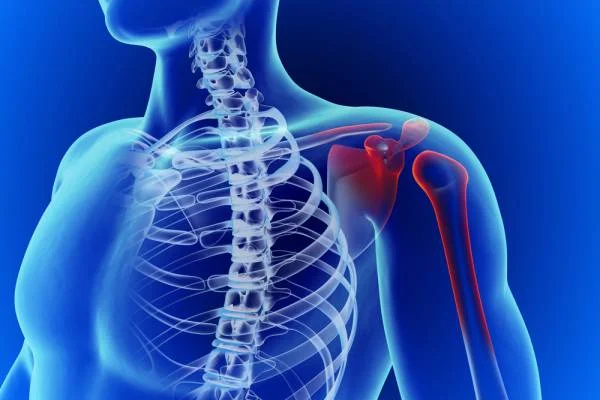Shoulder pain: Does it really need a tagline?
“Do not blame the name, Understand the game.”
Credit Shutterstock
The below article is written based on an article from British Journal of Sports Medicine first published online on 2nd Nov 2016 doi:10.1136/bjsports-2016-096772
Shoulder is a complex joint as it moves along with other structures. Shoulder can produce a powerful movement almost in every direction making it susceptible to numerous injuries. A lot has been said about diagnosing shoulder pain where the focus is too much on identifying the structural damage. Whereas when it comes to managing pain, it has been seen that the symptoms are produced by multiple factors including posture, mobility and muscular strength in and around shoulder joint.
A shoulder joint (Gleno-Humeral joint) is a ball and socket joint between humerus (arm bone) and scapula (triangular flat bone behind shoulder). The collar Bone (Clavicle) connects to scapula through Acromio-Clavicular joint and chest bone (Sternum) via Sterno-Clavicular joint. A full shoulder Range of motion is a collective effort of all three joints along with good mobility from thoracic spine and ribs.
The muscles responsible for shoulder functions, like Pectorals, Deltoids and Rotator cuff etc. are not just limited to the above mentioned joints in shoulder complex but also to ribs and thoracic spine via different muscles. It even includes your core and pelvic stabilizers to form the basis of effective and dynamic movements of shoulder. Lower body strength and balance are equally contributing to generate proper force transmission through ground reaction force during a powerful movement from the shoulder.
Credit: WebMd
If you look at the anatomy and function of shoulder region, the arm is almost hanging to the torso via scapula and various muscles enabling it to do large movements but keeping it also at risk of injuries. No matter if you are a high performance athlete or a sedentary person, a poor posture (static or dynamic) leads to loss of mobility in concerned areas and creates muscular imbalances around spine and shoulder joint.
The scapula (triangular flat bone) behind the upper back plays a crucial role in dynamic motion of the shoulder. During a shoulder movement, scapula stabilizes itself on ribs with some degree of movement to produce a strong dynamic movement of humerus (arm bone). The poor muscle control around scapula changes the movement pattern of humerus which leads to impingement of musculature passing from under the shoulder region.
Some various common diagnosis in shoulder pain are supraspinatus tendonitis, Painful Arc syndrome, shoulder impingement etc. Why we are so keen on naming these diagnosis? We already know that there must be multiple events which has gone biomechanically wrong to create the basis for an injury. The investigations such as MRI or CT scan always direct us towards the local structure which is injured but is not usually the source of pain. The injured structure is only one of the source which is creating trouble during the painful movement.
When there are so many events involved in a painful shoulder, it is not feasible to label it with one diagnosis. Rather we should physically assess for muscular imbalances and biomechanical changes which are the root cause of current injury. We should make a physical diagnosis rather than a diagnosis based on mere investigations. The physical diagnosis helps in planning and implicating conservative management mainly corrective exercises to restore the muscular imbalances. There is a very limited role of surgeries in managing shoulder pain considering the cost required and risk involved in shoulder repair. Saltychev M et al said there was moderate evidence that surgical treatment is not more effective than active exercises on reducing pain intensity caused by shoulder impingement.
Click here for a previous article on Exercises for Shoulder.
